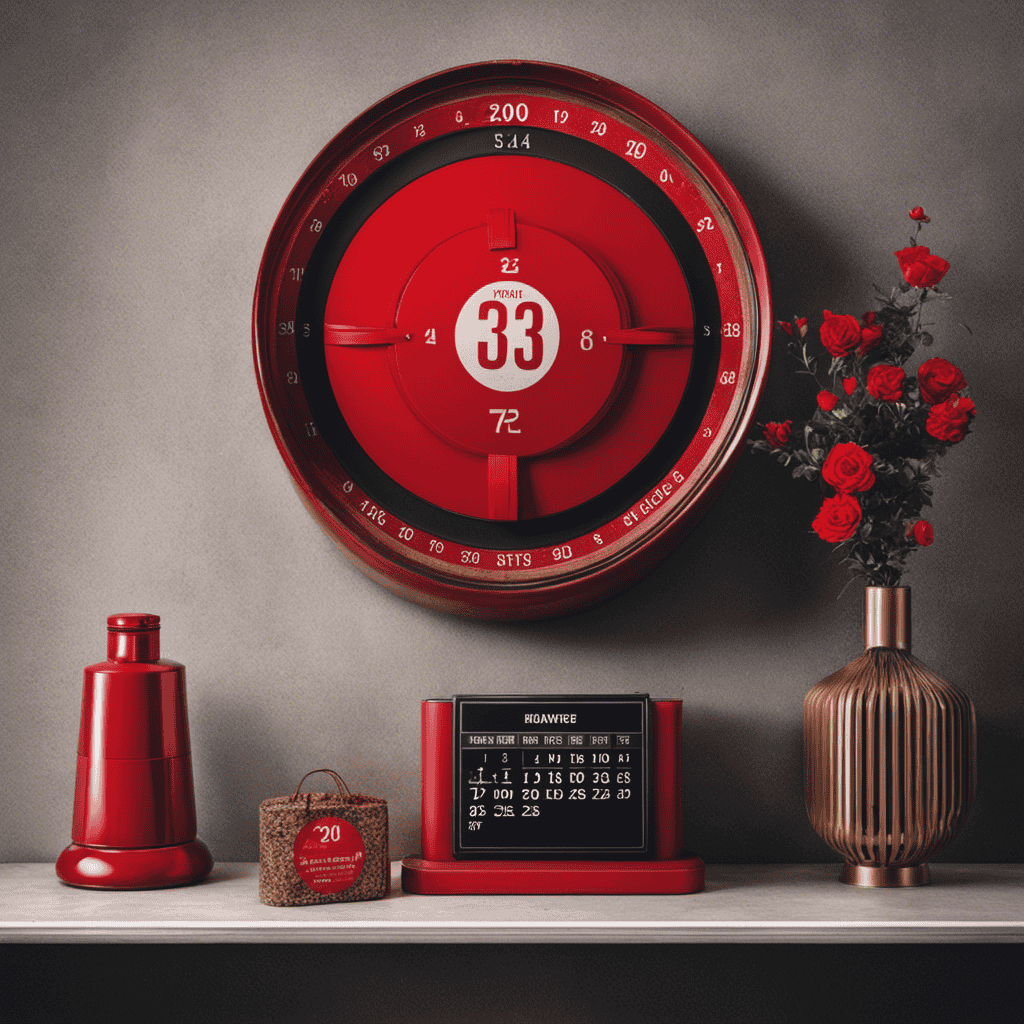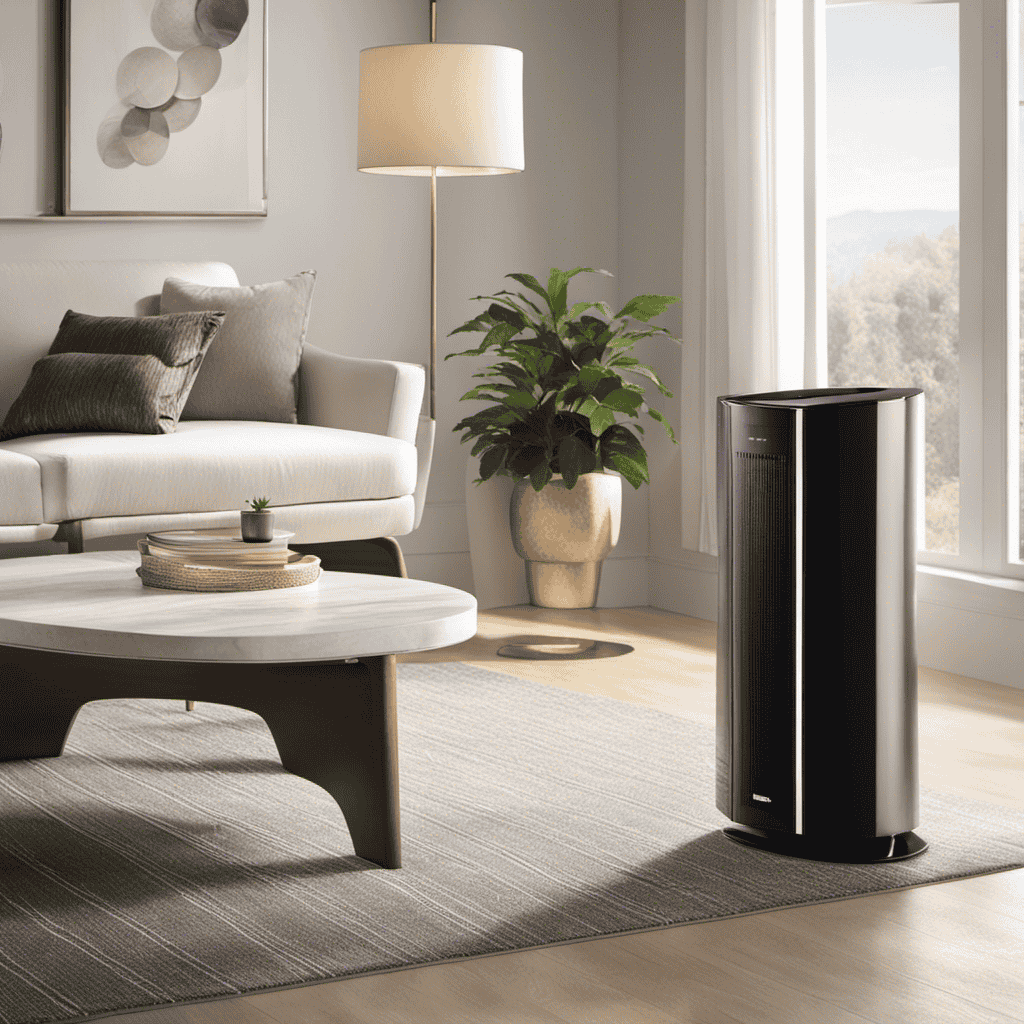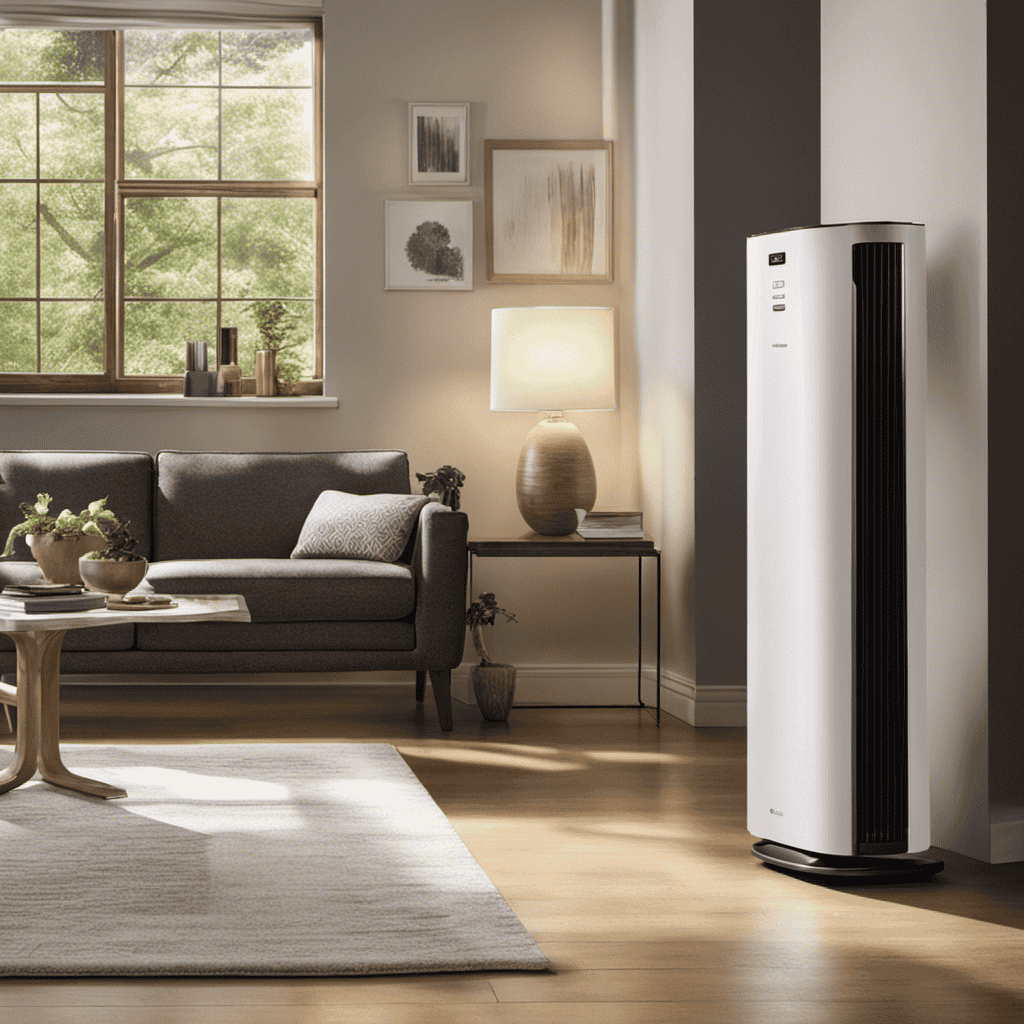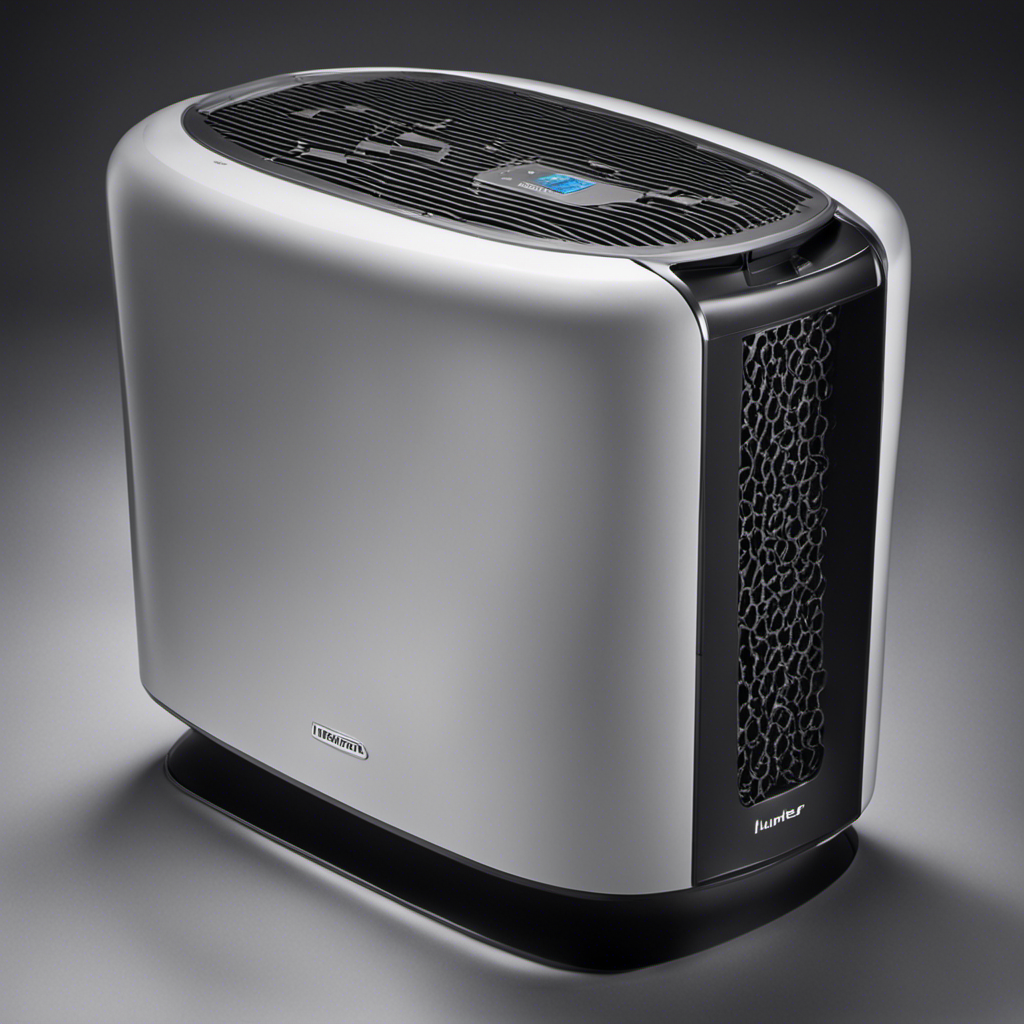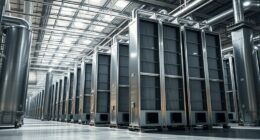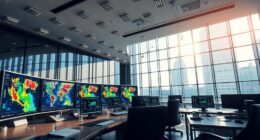Hello! Have you ever been curious about how an air purifier differs from a dehumidifier? I’m here to clarify this subject for you.
These two devices may seem similar, but they actually have distinct functions. In this article, we’ll explore how air purifiers and dehumidifiers work, their key features, and the benefits they offer.
So, if you’re ready to dive into the world of indoor air quality, let’s get started!
Key Takeaways
- Air purifiers focus on improving indoor air quality by removing airborne contaminants.
- Dehumidifiers primarily target excess moisture in the air.
- Air purifiers utilize filters to trap particles and provide cleaner air for breathing.
- Dehumidifiers reduce humidity levels and prevent the growth of mold, mildew, and bacteria.
How They Work
Air purifiers work by filtering out pollutants in the air, while dehumidifiers work by removing excess moisture from the air.
Air purifiers have several advantages. They can improve indoor air quality by removing allergens, such as dust, pollen, and pet dander, which can be beneficial for people with allergies or asthma. They can also eliminate harmful particles like mold spores, bacteria, and viruses, reducing the risk of respiratory infections.
However, air purifiers have some disadvantages too. They can be noisy, especially if they have a fan. Some models may also require regular filter replacements, adding to the maintenance cost.
On the other hand, dehumidifiers have their own set of advantages. They can prevent mold growth, reduce musty odors, and protect belongings from moisture damage. However, dehumidifiers can increase energy consumption and may not be necessary in areas with low humidity levels.
Key Features
To better understand the key features, you should consider which one best suits your needs – an air purifier or a dehumidifier.
When it comes to key features, both appliances offer distinct benefits. An air purifier focuses on improving indoor air quality by removing airborne contaminants such as dust, pollen, and pet dander. It utilizes filters to trap these particles and provide cleaner air for breathing.
On the other hand, a dehumidifier primarily targets excess moisture in the air. It reduces humidity levels, preventing the growth of mold, mildew, and bacteria. Additionally, dehumidifiers can help alleviate allergies and respiratory issues caused by high humidity.
When comparing performance, air purifiers are effective in reducing airborne pollutants, while dehumidifiers excel in controlling moisture levels. Therefore, your decision should depend on your specific needs and the environmental conditions you are dealing with.
Benefits of an Air Purifier
I’ve always struggled with allergies and asthma, and I know firsthand how important it is to have improved indoor air quality.
An air purifier can be a game-changer in this regard. It helps remove allergens and pollutants from the air, reducing the triggers for these respiratory conditions.
Numerous studies have shown that air purifiers can provide significant relief for allergy and asthma sufferers. They can improve symptoms and overall quality of life.
Improved Indoor Air Quality
You can easily improve indoor air quality by using an air purifier or dehumidifier. These devices are designed to remove harmful pollutants and allergens from the air, making your indoor environment cleaner and healthier. But how do they differ? Let’s compare the two in a table below:
| Air Purifier | Dehumidifier | Ventilation System |
|---|---|---|
| Removes airborne particles such as dust, pollen, and pet dander | Controls humidity levels by extracting excess moisture from the air | Circulates fresh outdoor air and removes stale indoor air |
| Can help with allergies and asthma symptoms | Helps prevent mold growth and musty odors | Provides continuous air exchange, reducing indoor pollutants |
| Requires regular filter replacement | Needs periodic emptying of the water tank | May require professional installation and maintenance |
Both air purifiers and dehumidifiers have their advantages, but a ventilation system offers a more comprehensive solution by addressing both air quality and humidity concerns. In the next section, we will explore how these devices can provide relief for allergies and asthma.
Allergy and Asthma Relief
A ventilation system can offer relief for allergies and asthma by providing continuous air exchange and reducing indoor pollutants.
Allergy prevention is crucial for individuals who suffer from allergies and asthma. The key to preventing allergies and asthma is to reduce exposure to allergens such as dust mites, pollen, pet dander, and mold spores.
This can be achieved through effective air filtration. Air filtration systems remove these allergens from the indoor air, improving the overall air quality and reducing the risk of allergy and asthma symptoms.
By continuously exchanging the air, a ventilation system ensures that fresh, filtered air is constantly circulating, reducing the concentration of allergens in the indoor environment.
This can provide significant relief for individuals with allergies and asthma, allowing them to breathe easier and enjoy a healthier living space.
Benefits of a Dehumidifier
As someone who is concerned about the quality of indoor air, I have found that using a dehumidifier has numerous benefits.
Firstly, a dehumidifier helps to reduce moisture in the air, which is important because excessive moisture can lead to the growth of mold and mildew.
Secondly, by preventing mold growth, a dehumidifier also improves indoor air quality, as mold spores can have negative effects on respiratory health.
Lastly, by reducing humidity levels, a dehumidifier can help alleviate respiratory issues such as allergies and asthma, making it a valuable tool for maintaining a healthy living environment.
Reduces Moisture, Prevents Mold
To reduce moisture and prevent mold, consider using an air purifier or a dehumidifier in your home. Both of these devices are effective in reducing humidity levels and preventing condensation, which are key factors in creating a mold-friendly environment. However, it’s important to understand the difference between the two.
An air purifier works by filtering and purifying the air, removing pollutants, allergens, and odors. While it can help improve air quality and reduce the presence of mold spores, it doesn’t directly control humidity levels.
On the other hand, a dehumidifier is specifically designed to remove excess moisture from the air. It works by extracting water vapor and condensing it into liquid form, effectively reducing humidity levels. By keeping the humidity in check, a dehumidifier helps prevent condensation and inhibits the growth of mold and mildew.
In summary, while both an air purifier and a dehumidifier can contribute to a healthier indoor environment, a dehumidifier is the better choice when it comes to reducing moisture and preventing mold. Consider using a dehumidifier in areas prone to high humidity, such as basements, bathrooms, or laundry rooms.
| Air Purifier | Dehumidifier |
|---|---|
| Filters and purifies the air | Removes excess moisture from the air |
| Reduces presence of mold spores | Controls humidity levels |
| Improves air quality | Prevents condensation |
| Eliminates pollutants, allergens, and odors | Inhibits growth of mold and mildew |
| Suitable for general air purification needs | Ideal for areas with high humidity |
Improves Indoor Air Quality
Consider using an air purifier or a dehumidifier to improve the air quality in your home.
When it comes to improving indoor air quality, both air purifiers and dehumidifiers play important roles, but they address different issues.
Air purifiers are designed to remove pollutants and allergens from the air, such as dust, pet dander, and pollen. They work by using filters or other technologies to capture and trap these particles, resulting in cleaner air to breathe.
On the other hand, dehumidifiers are used to reduce excess moisture in the air, preventing the growth of mold and mildew. While air purifiers can help remove airborne pollutants, dehumidifiers target the source of the problem by controlling humidity levels.
It’s worth noting that neither an air purifier nor a dehumidifier can replace proper ventilation, which is important for fresh air circulation. So, if you’re looking to improve indoor air quality, consider using an air purifier in conjunction with a ventilation system or a dehumidifier to address multiple factors.
Helps With Respiratory Issues
If you suffer from respiratory issues, using an air purifier or dehumidifier can greatly help alleviate your symptoms.
Respiratory conditions such as asthma, allergies, and chronic obstructive pulmonary disease (COPD) often result in breathing difficulties due to the presence of allergens, pollutants, or excessive moisture in the air.
An air purifier filters out airborne particles, such as dust, pollen, pet dander, and mold spores, which can trigger respiratory symptoms.
On the other hand, a dehumidifier reduces humidity levels, preventing the growth of mold and mildew, which can worsen respiratory conditions.
Both devices can improve indoor air quality and create a more comfortable environment for those with respiratory issues.
Now, let’s explore the common uses of air purifiers and dehumidifiers in more detail.
Common Uses
When it comes to common uses, you’ll find that an air purifier is great for improving indoor air quality, while a dehumidifier helps to reduce excess moisture in the air. Here are three key points to consider when comparing the uses and benefits of these two devices:
-
Air Purifier Uses: An air purifier is designed to remove contaminants from the air, such as dust, pollen, pet dander, and mold spores. It helps to reduce allergens that can trigger respiratory issues and improves overall air quality.
-
Dehumidifier Uses: A dehumidifier is primarily used to decrease humidity levels in a room or space. It helps to prevent the growth of mold and mildew, which thrive in damp environments. By reducing excess moisture, it also helps to alleviate respiratory symptoms caused by mold and other allergens.
-
Choosing the Right Device: The decision between an air purifier and a dehumidifier depends on the specific needs of your environment. If you are concerned about airborne allergens and improving air quality, an air purifier is the better choice. On the other hand, if you are dealing with high humidity levels and the risk of mold growth, a dehumidifier is more suitable.
In terms of maintenance and care, both devices require regular cleaning and filter replacement to ensure optimal performance. It is important to follow the manufacturer’s instructions for proper maintenance.
Overall, understanding the differences and applications of air purifiers and dehumidifiers can help you make an informed decision and create a healthier indoor environment.
Choosing the Right Option
The decision ultimately depends on your specific needs and environment. When choosing between an air purifier and a dehumidifier, it is essential to consider the pros and cons of each option and their energy efficiency.
Air purifiers work by filtering out various pollutants from the air, such as dust, pollen, and pet dander. They can be beneficial for individuals with allergies or respiratory conditions. However, air purifiers may not be as effective in removing moisture or reducing humidity levels.
On the other hand, dehumidifiers are designed to remove excess moisture from the air, helping to prevent mold and mildew growth. They can be particularly useful in damp environments or areas prone to high humidity levels. However, dehumidifiers do not filter out airborne particles like air purifiers do.
When it comes to energy efficiency, both options have their considerations. Air purifiers typically consume less energy, especially if they have energy-saving features. Dehumidifiers, on the other hand, may require more energy to remove moisture from the air, but energy-efficient models are available.
Maintenance and Care
To keep your device running efficiently, it’s important to regularly clean and replace the filters in both options. Here are some maintenance tips and a troubleshooting guide to help you:
-
Clean the filters: Dust, allergens, and other particles can accumulate on the filters, reducing their effectiveness. Regularly clean them according to the manufacturer’s instructions to maintain optimal performance.
-
Replace filters when necessary: Over time, filters can become clogged and lose their ability to capture contaminants. Replace them as recommended by the manufacturer, usually every 6 to 12 months, to ensure the device continues to function effectively.
-
Troubleshooting common issues: If you experience any problems with your air purifier or dehumidifier, refer to the troubleshooting guide provided by the manufacturer. It will help you identify and resolve issues such as strange noises, poor airflow, or error messages.
Frequently Asked Questions
Can an Air Purifier Help With Allergies?
Yes, an air purifier can help with allergies. By removing allergens like dust, pollen, and pet dander from the air, it reduces the triggers that cause allergic reactions. Regular maintenance of the air purifier ensures optimal performance.
Are Dehumidifiers Noisy to Operate?
Dehumidifiers can be noisy to operate, but there are quiet options available. It’s important to consider the benefits of using an air purifier as well, as they can help improve air quality and reduce allergens.
Can an Air Purifier Remove Pet Dander From the Air?
Yes, an air purifier can effectively remove pet dander from the air. Regular air purifier maintenance is important to ensure optimal performance. Additionally, using a dehumidifier can provide benefits such as reducing moisture levels and preventing mold growth.
Are Dehumidifiers Effective in Preventing Mold Growth?
Dehumidifiers effectively prevent mold growth by reducing moisture and preventing condensation. They remove excess moisture from the air, creating an environment where mold cannot thrive.
Can an Air Purifier Eliminate Cooking Odors?
An air purifier can effectively eliminate cooking odors and reduce indoor pollutants. It uses filters to capture and remove particles from the air, improving overall air quality and creating a fresh environment.
Conclusion
In conclusion, understanding the difference between an air purifier and a dehumidifier is essential in maintaining a healthy indoor environment.
While an air purifier removes airborne pollutants, a dehumidifier controls the moisture levels in the air.
Both devices have distinct benefits and common uses, depending on individual needs.
Interestingly, studies have shown that indoor air can be up to five times more polluted than outdoor air, emphasizing the importance of investing in these devices for a clean and safe living space.

